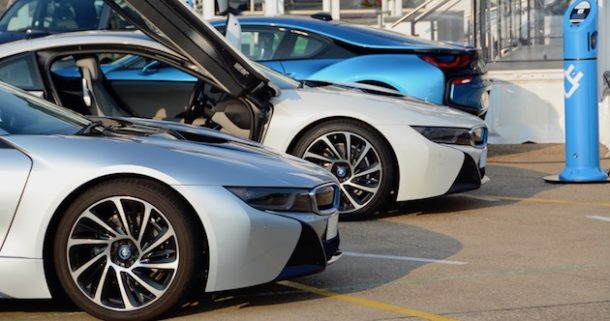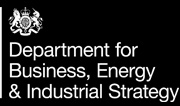
Industry News: The future of cars
The biggest change in cars for one hundred years is now starting. It is driven by totally new requirements and capabilities. They will cause huge new businesses to appear but some giants currently making cars and their parts will spectacularly go bankrupt…
Cities will ban private cars but encourage cars as autonomous taxis and rental vehicles. Already 65% of cars in China are bought by businesses. The Japanese want the car to be part of the hydrogen economy and a source of power when the next earthquakes and tsunamis hit. The emerging countries want car-like vehicles, mainly as taxis, that are one tenth of the cost and never refuel because the ample sunshine and wind will be grabbed and stored by the vehicle. There is even work on getting electricity from tyres.
China is key
China is the country that buys the most vehicles, has some of the lowest costs and is leapfrogging innovation, but completely different market drivers with the government controlling supply, demand and regulation. Even Chinese manufacturers do not know what comes next, some of which is naked protectionism and some of which, like the recent reintroduction of HEV financial support, a surprise for other reasons.
Mechanics becomes electrics
For cars, the mechanical world of cogs, axles, pistons and brakes is becoming one of power electronics, complex electric machine systems, batteries and their successors. Integration is the name of the game with components-in-a-box becoming smart wheels and smart inside and outside bodywork and seating. The dashboard and instruments will be made as one piece of formed composite with one company even planning highest-efficiency solar being the surface of this integrated dashboard to drive internal electrics. That featherweight solar layer was previously only affordable on satellites but its cost is promised to drop by one thousand.
Structural electronics in cars
Optics, electrics, electronics and electrics will combine in “structural electronics” to make the traditional component maker and assembler suddenly feel unwanted, while there is a shortage of the new skills and manufacturing facilities. Smart wheel systems could mean more space, less weight and better steering and performance in slippery conditions. Key enabling technologies rapidly move to batteries, power electronics and often multiple traction motors. Then comes very different energy storage, power electronics (now including many new forms energy harvesting including regeneration), signal electronics and reversing electric machines – often several per car and sometimes with the motor electronics costing more than the motor. Add significant software and services.
Car-like vehicles become important
There will be a huge market emerging for the cheapest, easiest way of converting existing production of cars to keep them legal as new global warming laws bite. This is the 48V mild hybrid: it will also peak in the next fifteen years but, before that, it will transmogrify into a hugely popular form of electric vehicle by becoming capable of several pure electric modes with engine off – such as the Mercedes broad move to 48V MH in 2017.
Energy independent cars are coming soon
Energy independent vehicles (EIVs) will become significant, not least as cars. LIDAR, RADAR, cameras, software and so on will be key for autonomy, with their relative importance changing rapidly. Volkswagen and Daimler have become ambivalent about fuel cell cars. Some say they are the end game, Hyundai says they are an important option and yet others call them fool cells. Will the Chinese flood the world with half-price basic electric cars?
Big risks
It breaks all the rules of safe manufacturing to radically change your product while increasing production one hundredfold – which is exactly what is happening with lithium-ion batteries. Battery fires and explosions are ongoing but some car and battery makers have a superb record.
Forecasts should not presume everything goes right. The anode, cathode, electrolyte and format are changing in a headlong race to smaller size and weight, less cooling and non-flammability.
EVs Go All-Wheel Drive
Jaguar Land Rover wants half its cars to be available in an electric version by the end of the decade, after showcasing its first electric car at the Los Angeles Auto Show earlier this month. It wants to build electric cars in Britain in what would be a further boost to the UK automotive sector after the Brexit vote. The Indian-owned carmaker built just under a third of Britain’s 1.6 million cars last year and has just showcased its first electric car, which will be built in Austria. I-PACE is a sporty crossover, in keeping with the brand’s image. The five-seat vehicle employs two electric motors, one for each axle, with a combined output of 400hp and 516 lb ft of torque meaning a 0-60mph time of four seconds – matching the high-performance Jaguar F-Type SVR sports car.
The sophistication of motor design and deployment in cars is now in some contrast to battery application where Tesla, GM and others currently achieve double range by little more than stuffing in twice the amount of battery meaning suffering twice the trading losses. The big story is not therefore whether battery costs will drop fast enough to prevent some motor manufacturers running out of re-investment. It is how power electronics with motors are expanding in form, function and integration, this boosting everything from performance to economy and the speed of progress towards energy independence. Some of this is even a work-round for the battery problem. For example, in-wheel motors with integrated brakes and motor controllers can increase range by 15%. Wide bandgap semiconductors in motor controllers can reduce or eliminate the need for water cooling and work more efficiently increasing range by 8%. The effects are multiplicative.
The move to multiple electric motors, at least one of which may be axle-mounted, may eventually include 48V mild hybrid cars and light commercial vehicles coming in in a big way in 2017. They will eventually transition to being true electric vehicles by having brief pure electric, engine-off modes such as take-off, creeping in traffic and active cruising made easier with dual drive. Nick Pascoe, CEO of CPT, a leading developer of the motor-generators at the heart of that technology, sees them starting as one per vehicle, an example being the engine-integrated starter generators appearing in the Mercedes S Class in 2017. Then, in some cases, adding an axle-mounted motor generator that does not perform the starter function but optimises traction and performance. One way or another, two or three motors per vehicle is becoming a very popular format in cars, industrial and commercial vehicles.
In-axle motors are coming in even when only one traction motor is used and this is part of a bigger picture spanning light commercial vehicles and even large industrial vehicles, though here we see great interest in near-wheel motors with no axle and to some extent in-wheel motors. Whereas batteries are stuck with lithium-ion technology for the coming decade, even as motors proliferate, there remains a healthy contest between asynchronous (AC induction), switched reluctance synchronous, permanent magnet synchronous and intermediate options. For example, a synchronous reluctance and a PM motor are the basis of IFEVS four wheel drive microcars in Italy. Asynchronous was considered to be the big, reliable but poorly performing and relatively inefficient “washing machine” option but they are standard on Tesla cars with ludicrous mode, a Canadian performance motorcycle announced this year, Continental boost starter generators for 48V mild hybrids and in an increasing number of other vehicles, particularly buses.
The motor technology contest shows that there are many more gains to be made with motors and related power electronics. We are moving on in both format and location from Toyota’s Aisin making sophisticated transmission-integrated motors and motor-generators for the successful Prius. For example, Dana’s new e-axles for electric transit buses and city delivery vehicles launching in 2018 will feature a fully axle-integrated motor and gear box sold as one item. They will supply appropriate product whether one or both axles are electrically powered in this way. Fuel economy is one gain from dispensing with heavy in-board mechanical drives in this way.
Reproduced from www.IDTechEx.com/cars





